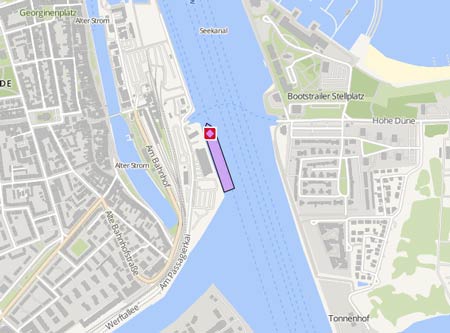JOHN I
Course/Position
Latest ports
Latest Waypoints
Latest news
Lack of experience caused grounding of bulkcarrier
The Transportation Safety Board found out that lack of experience operating in ice-covered waters and uncoordinated emergency response led to the grounding of the "John I" on Mar 14, 2014 off Newfoundland and Labrador. The TSB has now released the report (M14A0051) of its investigation of the incident. The "John I" entered ice-covered waters off the southwest coast of Newfoundland on its way to Montreal, Quebec, from Las Palmas, Spain. After the engine cooling water temperature began to rise, the crew opened the sea water strainer housing and found that the strainer was plugged. As the crew began removing ice and slush from the strainer, water began to overflow from the open strainer housing. When the crew attempted to close the leaking sea chest valve to stop the flow of water, its operating mechanism failed. Sea water began to enter the vessel in an uncontrolled manner, overflowing into the engine room. The master then ordered the vessel to be blacked out, causing it to drift. As the vessel drifted towards the shore, commercial towing assistance was requested, but delayed due to the weather. On arrival on scene, the Canadian Coast Guard Ship (CCGS) "Earl Grey" offered to tow the "John I"away from the shore. Further delays were encountered while the "John I"'s master conferred with the vessel's managing company, the CCG and the Joint Rescue Coordination Centre (JRCC). When the master finally accepted the tow, the first attempt to establish a tow line failed, and the vessel's proximity to the shoals did not allow for completion of a second attempt. The "John I" then ran aground on the shoals. The crew members were evacuated by helicopter. The vessel's hull sustained minor damage. The investigation found that warmed sea water from the engine cooling system was being partially discharged overboard and partially returned to the main sea water pump suction, rather than being recirculated to the low sea chest to prevent ice buildup. The strainer became plugged with ice and slush. The sea chest valve was prevented from fully closing, likely due to ice buildup, and the valve operating mechanism failed due to overstress when the crew forcibly attempted to close it, which led to the flooding. The JRCC did not have the authority to direct the master of the "John I" to accept the tow. Neither the Department of Fisheries and Oceans Environmental Response nor Transport Canada, both of which had the authority to direct the vessel to accept the tow, were actively involved at an earlier stage when it was clear that the time to take action was running out and the environmental risks posed by the vessel going aground were increasing. The delay in starting the towing operation was caused both by the master's reluctance to accept the tow and by the way that authorities managed the situation. If all authorities responsible for dealing with an emergency are not involved in a timely and coordinated manner, says TSB, there is a risk that response options will be limited and the situation will escalate. Full report: http://www.marinelog.com/images/PDF/M14A0051.pdf
Upload News

